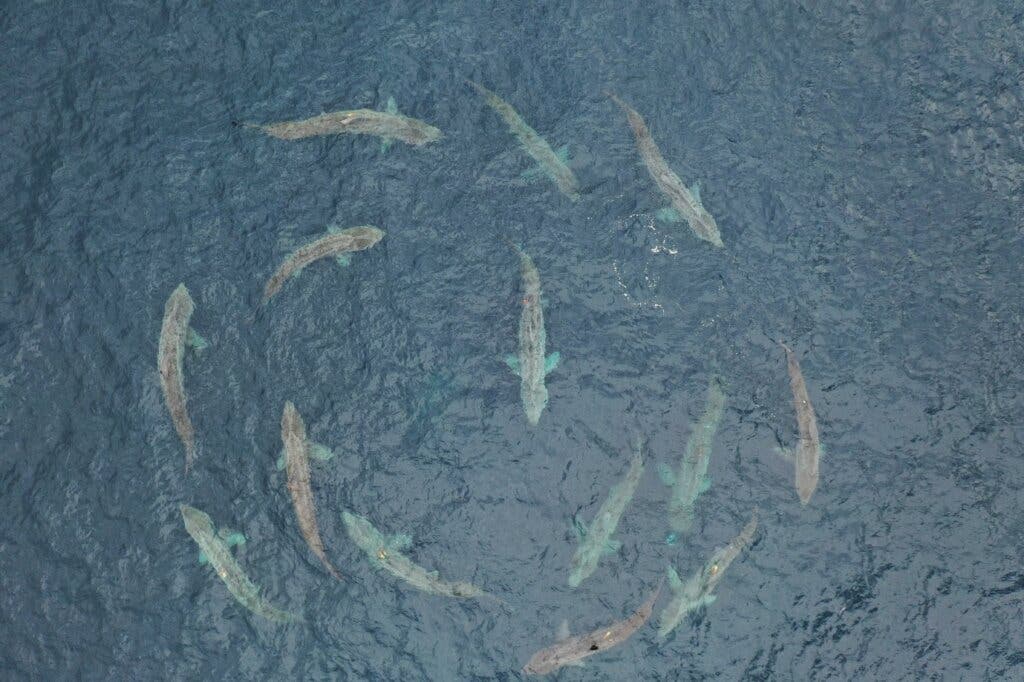Basking sharks, the second largest species of fish in the world after the whale shark, have been spotted doing strange circle dances off the North Atlantic coast of Canada and the US — a behavior researchers couldn’t explain until now. As it turns out, the sharks do this as part of a “speed dating” style courtship dance, a new study found.

Usually solitary, these massive sharks (they can measure up to 33 feet or 10 meters long) only come together to mate, although mating has never been observed. They have been sighted swimming in circles, and while that was suspected to be mating-related behavior, the exact reasons for the activity couldn’t be confirmed.
Researchers from England’s Marine Biological Association and Ireland’s Basking Shark Group used underwater cameras and drones to study the sharks’ gatherings off the coast of County Clare in Ireland. They were able to document a total of 19 circling groups at nine locations from 2016 to 2021, with six to 23 sharks in each of the groups.
How usually solitary basking sharks find a mate in the ocean’s expanse has been an enduring mystery,” David Sims, lead author of the study, said in a statement. “Incredibly we now find that a courtship torus not only forms but acts like a slow motion ‘speed-dating’ event for assessing lots of potential mates in one go.”
Sharks and speed dating
In each group of sharks in the study, some sharks are swimming slowly at the surface, and others are a bit lower– a 3D ring structure the researchers called a “torus.” The study showed the groups in circle formations had equal numbers of sexually mature males and females and the sharks were not filter-feeding, an initial theory the researchers had.
Some females had a paler body color than males, a difference seen in courtship and mating behavior in other shark species. The study showed females and males associated with most members in the circle in just a matter of minutes, interacting through fin-fin and fin-body touching – a signal that indicated their readiness to mate.
“It is astonishing that this wonder of the natural world has remained hidden for so long, presumably because circles most often form at depth away from surface observation, which could explain why mating itself has never been seen,” David Sims, the study’s lead author and University of Southampton researcher, said in a statement.
The researchers hope their findings can help identify other basking shark courtship grounds to ensure appropriate conservation measures to safeguard this giant’s love dance. They also called for protection measures in Irish waters from potential threats, including the impact of offshore renewable projects and collisions with marine traffic.
The basking shark (Cetorhinus maximus) is listed as endangered on the IUCN Red List due to historic pressures from the fishing industry and its slow reproductive cycle. Fishing of the shark has largely ceased today, and the species has some level of protection by governments. However, the shark is still taken as a bycatch in fishing nets sometimes.
The study was published in the Journal of Fish Biology.






